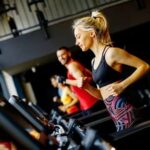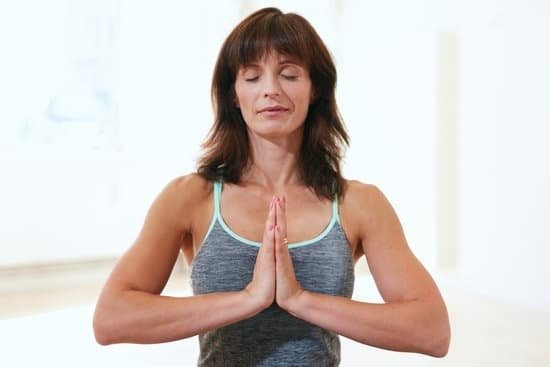Skill-related fitness is a term commonly associated with athletes, highlighting the importance of physical abilities such as agility, coordination, and power in athletic performance. However, skill-related fitness is not limited to the domain of sports. In fact, individuals from all walks of life can benefit from developing and enhancing these skills. This article aims to explore the components of skill-related fitness, highlight its benefits beyond athletic performance, and emphasize its importance for both athletes and non-athletes.
The concept of skill-related fitness encompasses various physical attributes that contribute to overall performance in activities requiring motor skills. Agility allows individuals to change direction quickly while maintaining balance and control, while coordination enables seamless movement between different body parts. Power is essential for explosive movements like jumping or throwing, while reaction time and speed are crucial in reacting swiftly to stimuli.
While traditionally associated with enhancing athletic abilities, skill-related fitness has far-reaching applications in everyday life as well. Improved agility, balance, and coordination can prevent injuries during activities such as walking on uneven terrain or climbing stairs. Additionally, better reaction time and coordination can enhance safety in various situations – whether it’s safely crossing the road or avoiding potential hazards at work.
Contrary to common misconceptions that only athletes can benefit from skill-related fitness training, this article seeks to emphasize how individuals of all ages and abilities can incorporate these principles into their routines. Whether it be dancers aiming for precision in their moves or musicians looking to enhance their fine motor skills for playing instruments, skill-related fitness has valuable implications beyond traditional athletic domains.
Moreover, professionals in physically demanding jobs like firefighters or healthcare workers greatly benefit from developed skill-related fitness for improved occupational performance.
Exploring Different Components of Skill-Related Fitness
Skill-related fitness encompasses various components that contribute to overall physical performance. Understanding these components can help individuals of all abilities recognize the potential benefits that skill-related fitness training can offer beyond just athletes.
Agility
Agility is the ability to change direction quickly and efficiently while maintaining control. While athletes often focus on agility to outmaneuver opponents, individuals in everyday life can benefit from improved agility as well. Whether it’s navigating through a crowded city street or participating in recreational sports, having better agility allows for quicker reactions and better overall movement.
Balance
Balance refers to the ability to maintain stability and equilibrium. Athletes need good balance to stay on their feet during rapid movements, but it also plays a vital role in preventing injuries for non-athletes. Improving balance can reduce the risk of falls, which is especially important for older adults. With enhanced balance, individuals gain better control over their bodies and can perform daily activities with confidence.
Coordination
Coordination involves the integration of multiple body parts and senses to produce smooth and efficient movements. For athletes, coordination is crucial for executing precise techniques and sequences. In non-athletic settings, enhanced coordination can lead to refined motor skills that support various activities such as playing an instrument or engaging in dance routines.
Power
Power refers to exerting maximum force rapidly. It is essential in sports activities that involve explosive movements like jumping and throwing. However, power is not exclusive to athletic pursuits. Non-athletes can benefit from increased power when participating in activities such as moving heavy objects or performing physically demanding tasks at work.
Reaction Time
Reaction time relates to how quickly an individual responds to a stimulus. Athletes rely on fast reaction times for quick decision-making during competitions. Similarly, non-athletes can benefit from improved reaction time in everyday situations that require swift responses for safety, such as avoiding accidents while driving or reacting to unexpected events.
Speed
Speed is the ability to move quickly from one point to another. While athletes train for speed to gain a competitive edge, non-athletes can also benefit from improved speed. Whether it’s catching a bus, keeping up with energetic children, or simply enjoying outdoor activities, enhanced speed allows individuals to move more efficiently and enjoy a more active lifestyle.
By exploring each component of skill-related fitness, it becomes evident that these qualities are not limited to athletes alone. Individuals in various fields and life contexts can benefit from skill-related fitness training by improving their agility, balance, coordination, power, reaction time, and speed. Incorporating exercises and activities specifically targeting these components can enhance overall physical performance and contribute to an improved quality of life for people of all ages and abilities.
Benefits of Skill-Related Fitness for Athletes
Skill-related fitness plays a crucial role in enhancing athletic performance and providing athletes with a competitive advantage. By focusing on the different components of skill-related fitness, athletes can improve their overall physical abilities and excel in their respective sports.
One major benefit of skill-related fitness for athletes is improved agility. Agility refers to the ability to quickly change direction while maintaining control and balance. This is particularly important in fast-paced sports such as basketball, soccer, or tennis, where quick changes in movement direction can be the difference between success and failure. Through targeted training that emphasizes agility exercises, athletes can enhance their ability to react quickly to dynamic situations on the field or court.
Another component of skill-related fitness that benefits athletes is power. Power involves the ability to exert force rapidly, which is necessary for explosive movements like jumping and sprinting. Athletes who have greater power can generate more force and speed during these movements, leading to improved performance in sports such as track and field or volleyball. Training methods such as plyometric exercises and weightlifting can help athletes increase their power output and maximize their athletic potential.
Furthermore, reaction time is a critical aspect of skill-related fitness that allows athletes to respond quickly to stimuli in their environment. In sports like baseball or boxing, where split-second decisions are crucial, having a faster reaction time can give athletes a significant advantage over their opponents. By incorporating reaction time drills into their training regimen, athletes can enhance their ability to anticipate and react swiftly to game situations.
Beyond Athletic Performance
Skill-related fitness is not only important for athletes, but it also has numerous benefits for individuals in everyday life. The components of skill-related fitness, such as agility, balance, coordination, power, reaction time, and speed, play a crucial role in overall physical performance. These components are not limited to the sports field; they can greatly impact daily activities and prevent injuries.
Improved agility is particularly important for avoiding accidents and injuries in daily life. It allows individuals to change direction quickly and maintain balance in various situations. For example, being able to quickly change direction or stop suddenly while walking on an uneven surface can prevent falls and potential injuries. Additionally, improved balance helps individuals navigate through their surroundings with stability and reduces the risk of falling.
Coordination is another component of skill-related fitness that has practical applications outside of sports. Good coordination enables individuals to perform complex movements effectively and efficiently. In everyday life, this translates into performing tasks that require multitasking or simultaneous movement of different body parts more smoothly. For instance, having good hand-eye coordination improves one’s ability to catch objects accurately or operate tools with precision.
| Benefits | Examples |
|---|---|
| Improved agility | Avoiding falls on uneven surfaces |
| Better balance | Reducing the risk of falls |
| Enhanced coordination | Performing tasks requiring multitasking with ease |
By incorporating skill-related fitness training into their routines, individuals can experience these practical benefits and improve their overall physical abilities outside of athletic performance. The next section will discuss how skill-related fitness can have a positive impact on the quality of life in various situations.
Skill-Related Fitness and Quality of Life
Introduction:
Skill-related fitness goes beyond just improving athletic performance. It has the potential to positively impact various aspects of everyday life, leading to an improved quality of life. While skill-related fitness is traditionally associated with athletes, its benefits extend far beyond the sports field.
Benefits of Skill-Related Fitness for Everyday Activities:
Improved agility, balance, and coordination are key components of skill-related fitness that can prevent injuries in daily life. Having better control over these skills allows individuals to navigate their surroundings more safely and react more effectively in unexpected situations. For example, having good balance enhances stability while walking on uneven surfaces or climbing stairs, reducing the risk of falls or accidents.
Furthermore, skill-related fitness contributes to enhanced reaction time and coordination, which can improve safety in various situations. Quick reflexes and coordination enable individuals to respond promptly and accurately when facing sudden challenges or emergencies. Whether it is catching a falling object or evading a potential hazard on the road, these skills can be particularly crucial for maintaining personal safety.
| Component | Contributions |
|---|---|
| Agility | Allows for quick change of direction and adaptability |
| Balance | Enhances stability and reduces the risk of falls or accidents |
| Coordination | Improves motor skills and precision movements |
| Reaction Time | Enables quick responses to stimuli and unexpected events. |
Conclusion:
Skill-related fitness shouldn’t be limited to athletes alone. Individuals of all ages and abilities can incorporate skill-related fitness training into their routines to experience the numerous benefits it brings. By improving agility, balance, coordination, reaction time, and other components of skill-related fitness, individuals can enhance their quality of life and ensure safer and more successful engagement in various activities. Embracing skill-related fitness is a valuable step towards unlocking one’s full physical potential.
Implications for Non-Athletes
Skill-Related Fitness and its Implications for Non-Athletes
Addressing Misconceptions
There is a common misconception that skill-related fitness only benefits athletes. However, this couldn’t be further from the truth. Skill-related fitness is not limited to those involved in sports; rather, it has immense implications for individuals of all ages and abilities. By incorporating skill-related fitness into their routines, non-athletes can experience numerous physical and mental benefits.
Incorporating Skill-Related Fitness
Individuals who are not necessarily engaged in competitive sports can still incorporate skill-related fitness into their daily lives. For example, improving agility, balance, and coordination can have a substantial impact on everyday activities. It helps in performing household chores more efficiently, moving with ease during leisure activities, and reducing the risk of injuries.
Achieving Better Quality of Life
Skill-related fitness also contributes to achieving a better overall quality of life for non-athletes. Improved reaction time and coordination enhance safety in various situations such as driving or navigating a crowded space. By honing these skills through targeted fitness training, individuals can prevent accidents and respond quickly when necessary.
Skill-Related Fitness for Dancers, Musicians, and Artists
Artistic fields such as dance, music, and art require individuals to possess physical abilities that are akin to those of athletes. Skill-related fitness plays a significant role in enhancing the performance and capabilities of individuals in these creative disciplines. By incorporating skill-related fitness training into their routines, dancers, musicians, and artists can improve their overall physical abilities and elevate their artistic performances.
One of the key components of skill-related fitness that is particularly relevant to dancers, musicians, and artists is coordination. The ability to coordinate different movements, whether it’s the synchronization of dance steps or playing multiple instruments simultaneously, is essential in these artistic disciplines. Through targeted coordination exercises such as balance exercises or rhythmic movements, individuals in these fields can improve their ability to control their bodies and execute precise movements with fluidity.
Another component of skill-related fitness that is beneficial for dancers, musicians, and artists is balance. Maintaining balance is crucial for performers who often engage in intricate movements or display physical agility during their performances. By incorporating exercises such as yoga or Pilates into their training routine, individuals in these fields can enhance their overall balance skills. Improved balance allows them to execute challenging moves with ease and grace while reducing the risk of injury.
Furthermore, agility is another aspect of skill-related fitness that directly impacts performers in artistic fields. Dancers require quick changes in direction and speed during complex choreography routines. Similarly, musicians need rapid finger movements while playing instruments or conducting an orchestra. By improving agility through exercises like ladder drills or quick footwork exercises, dancers, musicians, and artists can enhance their ability to move swiftly and effortlessly during performances.
Skill-Related Fitness and Occupational Performance
In addition to its role in athletic performance, skill-related fitness can also have a significant impact on occupational performance. Many professions require individuals to possess certain physical abilities in order to effectively carry out their job responsibilities. This section will explore the ways in which skill-related fitness can enhance job performance and highlight specific professions where these skills are crucial.
Enhanced Physical Abilities for Job Performance
Occupations such as firefighters, police officers, healthcare workers, and construction workers often require individuals to perform physically demanding tasks that rely heavily on skill-related fitness components. For example, firefighters need to have power, agility, coordination, and balance to efficiently navigate through hazardous environments and carry out rescue operations.
Police officers may need quick reaction time and speed when responding to emergency situations or apprehending suspects. Healthcare workers such as nurses or paramedics may require good balance and coordination when assisting patients or performing medical procedures.
The Role of Skill-Related Fitness in Safety
Skill-related fitness is not only important for performing job duties effectively but also for ensuring safety in the workplace. Individuals who possess better reaction time and coordination are more likely to prevent accidents or respond quickly to unexpected situations that arise on the job.
For example, a construction worker with improved balance is less prone to falls from heights or injuries due to uneven surfaces. In occupations where split-second decisions can make a difference between life and death, having optimal skill-related fitness can be critical.
Incorporating Skill-Related Fitness into Occupational Training
To maximize occupational performance and reduce the risk of injury in the workplace, employers should consider incorporating skill-related fitness training into their employees’ occupational training programs. This could involve incorporating exercises that target agility, balance, coordination, power, reaction time, or speed into regular training sessions. By improving these components of skill-related fitness, individuals are better equipped to handle the physical demands of their jobs and maintain a safe working environment.
Conclusion
In conclusion, skill-related fitness is not limited to athletes and can benefit individuals from all walks of life. While it is often associated with athletic performance, the various components of skill-related fitness such as agility, balance, coordination, power, reaction time, and speed contribute to overall physical performance in everyday activities as well.
One of the key benefits of skill-related fitness is its impact on daily life. Improved agility, balance, and coordination can help prevent injuries in day-to-day tasks. Whether it is navigating uneven terrain or avoiding hazards at home or work, having these skills can greatly enhance safety and reduce the risk of accidents.
Furthermore, skill-related fitness has a significant impact on an individual’s overall quality of life. Better reaction time and coordination can improve safety in various situations beyond sports. From driving to crossing the street to participating in recreational activities, these skills play a crucial role in ensuring personal well-being.
It is important to debunk the misconception that only athletes can benefit from skill-related fitness. Individuals of all ages and abilities can incorporate skill-related fitness into their routines to improve their overall physical abilities. From dancers and musicians who require enhanced motor skills for better performances to professionals like firefighters, police officers, and healthcare workers who rely on these skills for their occupational performance, skill-related fitness has wide-ranging applications.
Frequently Asked Questions
Can others besides athletes benefit from skill related fitness Why?
Skill related fitness is not limited to athletes; it can benefit individuals in various ways. Firstly, skill related fitness focuses on improving qualities such as coordination, balance, agility, reaction time, and power. These are attributes that are valuable for anyone participating in physical activities or everyday tasks.
For example, improved coordination can help individuals navigate through daily movements more efficiently and reduce the risk of injuries. Additionally, better reaction time and agility can enhance safety while driving or participating in recreational activities. By developing skill related fitness, people of all backgrounds can improve their overall physical abilities and enhance their quality of life.
How do you benefit from skill related fitness Why?
Skill related fitness offers numerous benefits to individuals who engage in regular physical exercise or sports activities. Firstly, it enhances performance in a specific sport or activity by improving specific skills required for that activity. For instance, a basketball player might focus on developing their agility and reaction time to excel on the court.
Secondly, skill related fitness improves overall physical conditioning by promoting increased strength, flexibility, speed, and endurance. This leads to improved cardiovascular health and reduced risk of chronic diseases like heart disease or obesity. Moreover, honing these skills contributes to increased self-confidence and a sense of accomplishment when achieving personal goals.
Why do athletes or athletic individuals need skill related fitness can non athletes benefit from skill related fitness Why?
Athletes or athletic individuals primarily need skill related fitness to achieve optimal performance within their chosen sport or competitive field. Developing specific skills such as speed for sprinters or accuracy for archers allows athletes to excel in their respective disciplines. Additionally, skill related fitness enhances an athlete’s ability to adapt quickly during competitions by improving reaction time and agility.
However, non-athletes can also derive immense benefits from skill related fitness training routines. Improved coordination and balance help prevent falls among the elderly population while reducing the risk of injuries during daily tasks such as walking up stairs or lifting objects correctly. Skill-related training enhances overall physical abilities for everyone, regardless of whether they participate in sports professionally or recreationally.

Passionate about providing useful information to anyone with an interest in the field of Personal Training, I strive to pass on to our readers quality information and to answer any questions about Personal Trainers, the work they do and how to become one.





